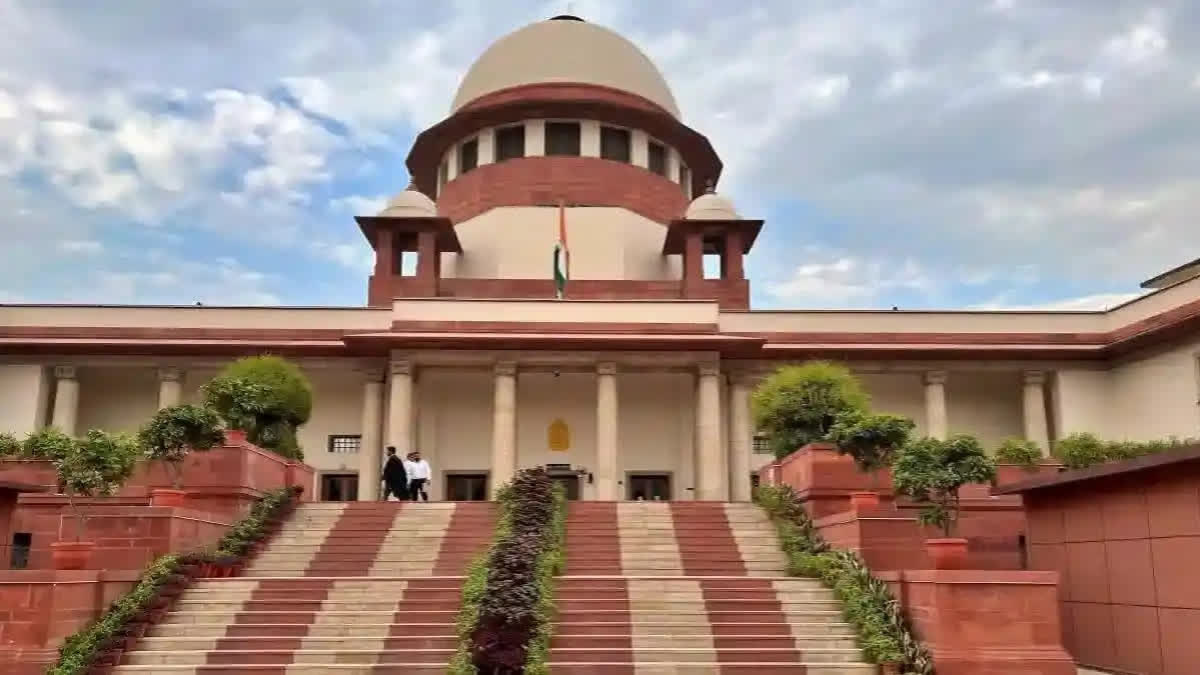New Delhi: The Supreme Court on Friday affirming its faith in Electronic Voting Machines (EVMs) said they have effectively eliminated booth capturing, eliminated invalid votes, which were a major issue with paper ballots.
The court stressed that EVMs are simple, secure and user-friendly, and the incorporation of the VVPAT system fortifies the principle of vote verifiability, thereby enhancing the overall accountability of the electoral process.
A bench comprising Justices Sanjiv Khanna and Dipankar Datta rejected petitions demanding 100% cross-verification of votes cast on EVMs with the VVPATs or going back to the ballot paper system. The bench delivered two separate but concurring judgments. The apex court stressed that it must reject as foible and unsound the submission to return to the ballot paper system. “The weakness of the ballot paper system is well known and documented”, it said.
Justice Khanna said: “A voting mechanism must uphold and adhere to the principles of security, accountability, and accuracy. An over complex voting system may engender doubt and uncertainty, thereby easing the chances of manipulation. In our considered opinion, the EVMs are simple, secure and user-friendly”. He said the incorporation of the VVPAT system fortifies the principle of vote verifiability, thereby enhancing the overall accountability of the electoral process.
The bench, to only further strengthen the integrity of the election process, passed two directions. “On completion of the symbol loading process in the VVPATs undertaken on or after May 1, 2024, the symbol loading units shall be sealed and secured in a container. The candidates or their representatives shall sign the seal. The sealed containers, containing the symbol loading units, shall be kept in the strong room along with the EVMs at least for a period of 45 days post the declaration of results”, said the bench.
Justice Khanna said: “The burnt memory/microcontroller in 5% of the EVMs, that is, the control unit, ballot unit and the VVPAT, per assembly constituency/assembly segment of a parliamentary constituency shall be checked and verified by the team of engineers from the manufacturers of the EVMs, post the announcement of the results, for any tampering or modification, on a written request made by candidates who are at SI.No.2 or Sl.No.3, behind the highest polled candidate”
“Such candidates or their representatives shall identify the EVMs by the polling station or serial number. All the candidates and their representatives shall have an option to remain present at the time of verification. Such a request should be made within a period of 7 days from the date of declaration of the result”, he said.
Justice Khanna said keeping in view the vast size of the Indian electorate of nearly 97 crore, it would be undoing the electoral reforms by directing reintroduction of the ballot papers, as EVMs offer significant advantages. “They have effectively eliminated booth capturing by restricting the rate of vote casting to 4 votes per minute, thereby prolonging the time needed and thus check insertion of bogus votes. EVMs have eliminated invalid votes, which were a major issue with paper ballots and had often sparked disputes during the counting process”, said Justice Khanna.
The bench also rejected petitioners’ contention that any elector should be liberally permitted as a routine to ask for verification of vote. “An overly liberal approach could cause confusion and delay – hindering the election process and dissuading others from casting their votes. ECI has stated that only 26 such requests in terms of Rule 49MA were received, and in all cases, the allegation was found to be incorrect”, said Justice Khanna.
He said the court has conducted an in-detail review of the administrative and technical safeguards of the EVM mechanism and “our discussion aims to address the uncertainties and provide assurance regarding the integrity of the electoral process”.
During the hearing, it was suggested that instead of physically counting the VVPAT slips, they can be counted by a counting machine. “This suggestion, including the suggestion that barcoding of the symbols loaded in the VVPATs may be helpful in machine counting, may be examined by the ECI”, he said.
In N. Chandrababu Naidu case, the direction for counting the VVPAT paper trail in 5 EVMs per assembly constituency or assembly segment in a parliamentary constituency was issued, primarily as a precautionary measure rather than a justification or necessity.
Justice Khanna said he is not inclined to modify the directions to increase the number of VVPAT undergoing slip count for several reasons. “First, it will increase the time for counting and delay the declaration of results. The manpower required would have to be doubled. Manual counting is prone to human errors and may lead to deliberate mischief. Manual intervention in counting can also create multiple charges of manipulation of results. Further, the data and the results do not indicate any need to increase the number of VVPAT units subjected to manual counting”, he said.
The bench said while it acknowledges the fundamental right of voters to ensure their vote is accurately recorded and counted, the same cannot be equated with the right to 100% counting of VVPAT slips, or a right to physical access to the VVPAT slips, which the voter should be permitted to put in the drop box. “These are two separate aspects – the former is the right itself and the latter is a plea to protect or how to secure the right”, said Justice Khanna.
Justice Khanna stressed that repeated and persistent doubts and despair, even without supporting evidence, can have the contrarian impact of creating distrust. “This can reduce citizen participation and confidence in elections, essential for a healthy and robust democracy. Unfounded challenges may reveal perceptions and predispositions, whereas this Court, as an arbiter and adjudicator of disputes and challenges, must render decisions on facts based on evidence and data”, he said.
Justice Khanna said the voters, candidates and their representatives, and the officials of the ECI are aware of the nitty-gritty of the EVM system and also check and ensure righteousness and integrity.
Read More



